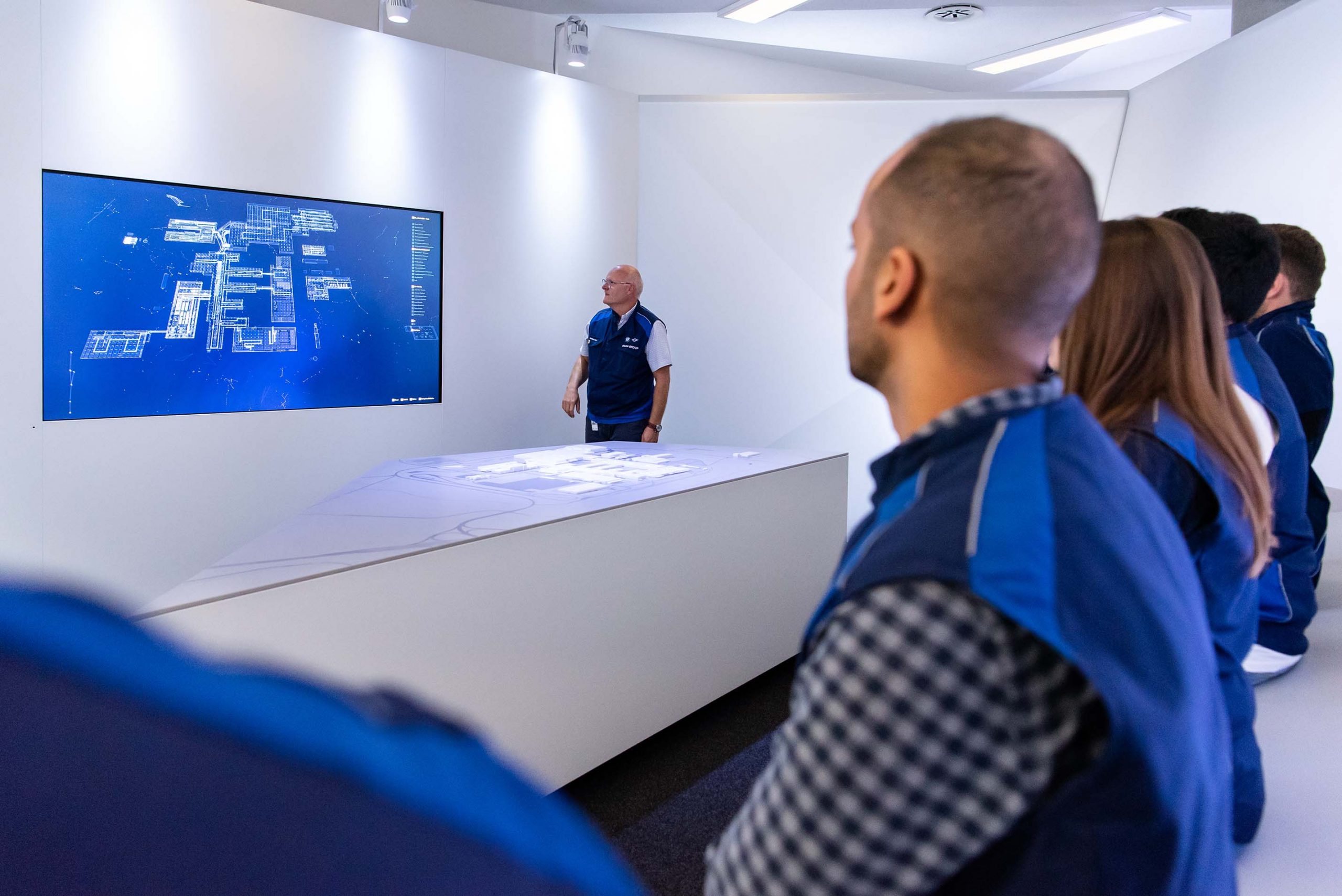
How can we foster a sense of community in distributed workers?
A car consists of many individual components, manufactured in a long production chain in the BMW factories. The „Fit For Production“ workshop series at BMW is designed to connect workers more deeply with the larger production process. This installation helps workers understand how their individual contributions fit into the broader context of BMW’s global operations, reinforcing the idea that even smaller roles are integral to the company’s overall success.
The combination of a miniature model of the factory and an interactive touchscreen creates a tangible, immersive experience. By allowing employees to interact directly with a model of their workplace, they can see in real-time how their specific tasks and locations contribute to the overall production cycle. This physical interaction, coupled with digital feedback on the touchscreen, helps bridge the gap between their day-to-day work and the larger goals of the company.
The installation not only educates employees about the production chain but also fosters a sense of pride and ownership in their work. Initially launched in Leipzig, Germany, it has since been implemented in BMW factories worldwide.
Results & Process
This installation was first developed by Christian Riekoff in 2015. It consists of various „slides“ (similar to PowerPoint or Keynote) that can be customized and reordered using a CMS. These slides provide the narrative throughout the workshop. Christian developed this installation using his own impressive creative coding programming language, which is based on Java.
To bring the successful installation into the modern era, we decided to completely rebuild the application in Unity. However, this proved to be quite challenging, as much of the native code was not as easily translatable as I had hoped.
Almost every visual aspect of this installation is based on the same particle system: Particles spawn at specific positions and are chained together using „springs“, that limit how far the particles can distance themselves from one another. When they exceed this limit, the spring pulls them back together, resulting in a natural, visually pleasant behavior.
You can see this best in a playful slide where users can touch the screen and drag the particles with their finger. As soon as they let go, the network snaps back to its original position.
Visitors can drag around the particles by touching the screen.
Around The World
Almost every visual aspect of this installation is based on the same particle system: Particles spawn at specific positions and are connected using „springs“ that limit how far the particles can move away from each other. When they exceed this limit, the spring pulls them back together, resulting in a natural and visually pleasing behavior.
This is best demonstrated in a playful slide where users can touch the screen and drag the particles with their finger. As soon as they let go, the network snaps back to its original position.
BMW's facilities and their production chain are visualized on a stylized globe that can be rotated freely.
Exploring The Factory
The miniature model plays an integral role in the workshop. Workers are encouraged to locate themselves on the model by touching the building where they work. When they do so, their names light up on a transparent visual representation of the model displayed on the touchscreen.
The rendering is further enhanced with „value streams,“ which show important production lines within the building. After a worker taps on a building, the display zooms in on that building, allowing the worker to specify their exact work position—this time on the touchscreen. Suddenly, a generative network lights up, symbolizing the interconnectedness of their work.
What seems so simple—spawning a random network within an area—proved surprisingly difficult to achieve! Naturally, we wanted the network to look good, with the points of the network evenly distributed across the area. However, simply randomizing the positions could result in all the points clustering in the same corner! To solve this, I had to do some research and eventually discovered „Poisson Disc Sampling,“ which provided visually pleasing and varied results for each new workshop day. 🙂
Particle systems also show on singular buildings and the whole factory.
Used Tools
Hardware
Projector, Touchscreen, DMX-controlled lighting, two cameras (one tracking fingers, one tacking ArUco markers), Jetson Nano
Software
Unity
Languages
C#